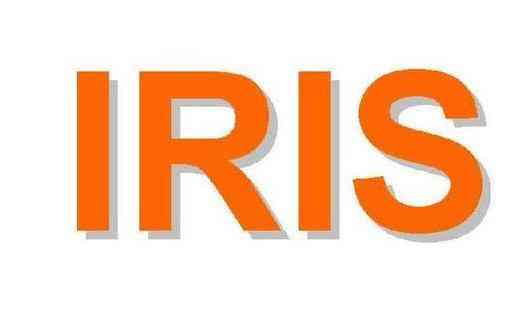|
IS0
I NTERN AT1 O NA L ORGAN IZAT I O N FOR STANDARD IZ AT I O N
IS0 R ECOM MEN DATI O N
R 420
SPECIFICATION FOR PHOTOGRAPHIC GRADE
POTASSIUM BROMIDE
1st EDITION
March 1965
.
COPYRIGHT RESERVED
The copyright of IS0 Recommendations and IS0 Standards
belongs to IS0 Member Bodies. Reproduction of these
documents, in any country, may be authorized therefore only
by the national standards organization of that country, being
a member of ISO.
For each individual country the only valid standard is the national standard of that country.
Printed in Switzerland
Also issued in French and Russian. Copies to be obtained through the national standards organizations.
---------------------- Page: 1 ----------------------
BRIEF HISTORY
The IS0 Recommendation R 420, Specification for Photographic Grade Potassium
Bromide, was drawn up by Technical Committee ISO/TC 42, Photography, the Secretariat
of which is held by the American Standards Association, Inc. (ASA).
Work on this question by the Technical Committee began in 1956 and led, in 1958,
to the adoption of a Draft IS0 Recommendation.
In August 1961, this Draft IS0 Recommendation (No. 395) was circulated to all the
IS0 Member Bodies for enquiry. It was approved, subject to a few modifications of an
editorial nature, by the following Member Bodies :
Belgium Germany Romania
Brazil Italy Sweden
Japan Switzerland
Canada
Chile Netherlands United Kingdom
France New Zealand U.S.A.
U.S.S.R.
No Member Body opposed the approval of the Draft.
The Draft IS0 Recommendation was then submitted by correspondence to the IS0
Council, which decided, in March 1965, to accept it as an IS0 RECOMMENDATION.
-3-
---------------------- Page: 2 ----------------------
I
IS0 / R 420 - 1965 (E)
IS0 Recommendation R 420 March 1965
SPECIFICATION FOR PHOTOGRAPHIC GRADE
POTASSIUM BROMIDE
1. SCOPE
This IS0 Recommendation is one of a series to establish criteria of purity of chemicals suitable
for processing photographic materials. A " photographic grade " chemical is one which meets
purity requirements as described.
This specification states the limiting concentrations and the test methods for certain inert or
photographically harmful impurities that may be present.
2. PHYSICAL APPEARANCE
Potassium bromide (KBr) is in the form of white crystals or crystalline powder.
3. SUMMARY OF REQUIREMENTS
Assay (as KBr) : 99.0 per cent minimum, 100.3 per cent maximum.
Chloride (as KCl) : 0.5 per cent maximum.
Iodide (KI) : to pass test.
Moisture : 0.3 per cent maximum.
Alkalinity (as KOH) : 0.015 per cent maximum.
Acidity as (HBr): 0.010 per cent maximum.
Oxidizing substances: to pass test.
Sulphide (as K,S): 0.0008 per cent maximum.
Insoluble matter, calcium, magnesium and ammonium hydroxide precipitate : 0.3 per cent maximum
residue.
Heavy metals (as Pb) : 0.002 per cent maximum.
Iron (Fe): 0.002 per cent maximum.
Appearance of solution: to pass test.
4. ASSAY (as KBr)
(99.0 per cent minimum, 100.3 per cent maximum)
Take about 0.4 g of the sample, weigh accurately and dissolve in 50 ml of distilled water. Add
exactly 50 ml of 0.1 N silver nitrate *, 2 ml of nitric acid, 15 ml of nitrobenzene or benzyl alcohol
(CAUTION: Avoid contact with skin) and, finally, 2 ml of saturated solution of ferric ammonium
sulphate. Titrate the excess silver nitrate with O. 1 N ammonium thiocyanate to the first persistent
colour change.
1 ml 0.1 N AgNO, = 0.0119 g KBr
Nom.-The assay limits are based on material as received and are not corrected for potassium chloride content.
The presence of potassium chloride will increase the assay value. 1 g of potassium chloride is equivalent to 1.6 g
of potassium bromide.
* Reagents used in making the tests should be recognized reagent grade chemicals normally used for careful analytical
work. In all the directions, the acids and ammonium hydroxide referred to should be of full strength, unless dilution is
specified. Dilution is specified in terms of normality, when standardization of the reagent is required. When dilution is
indicated as (1 +x), it means 1 volume of the reagent or strong solution diluted with x volumes of distilled water.
-5-
---------------------- Page: 3 ----------------------
IS0 / R 420 - 1965 (E)
5. CHLORIDE (asKC1)
(0.5 per cent maximum)
Dissolve 0.5 5 0.01 g of the sample in 15 ml of dilute nitric acid (1 + 2) in a small conical flask.
Add 6 ml of 15 per cent hydrogen peroxide solution (prepared by diluting 1 volume of 30 per cent
hydrogen peroxide with 1 volume of distilled water) and digest on a steam bath until the solution
is colourless. Wash down the sides of the flask with distilled water, digest for an additional 15 min,
cool and dilute to 250 ml with distilled water. Dilute a 10 ml aliquot to 25 ml with distilled water
and add 1 ml of nitric acid and 0.5 ml of 10 per cent silver nitrate solution. Any turbidity produced
should be not greater than that produced by treating 0.06 mg of sodium chloride in the same
manner as the aliquot. Use Nessler tubes for comparison.
Nom-The test control and sample solutions should be prepared at
...














